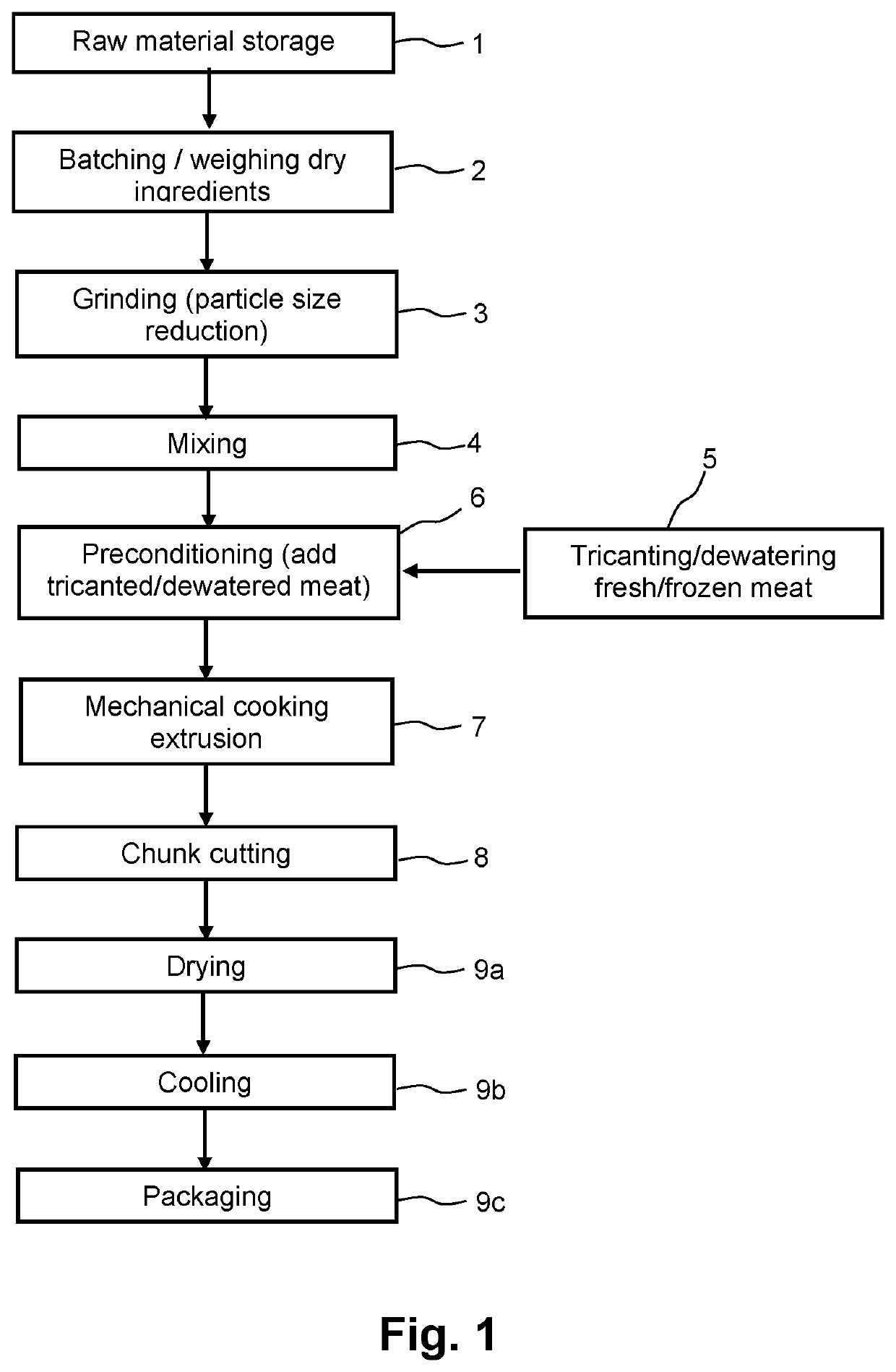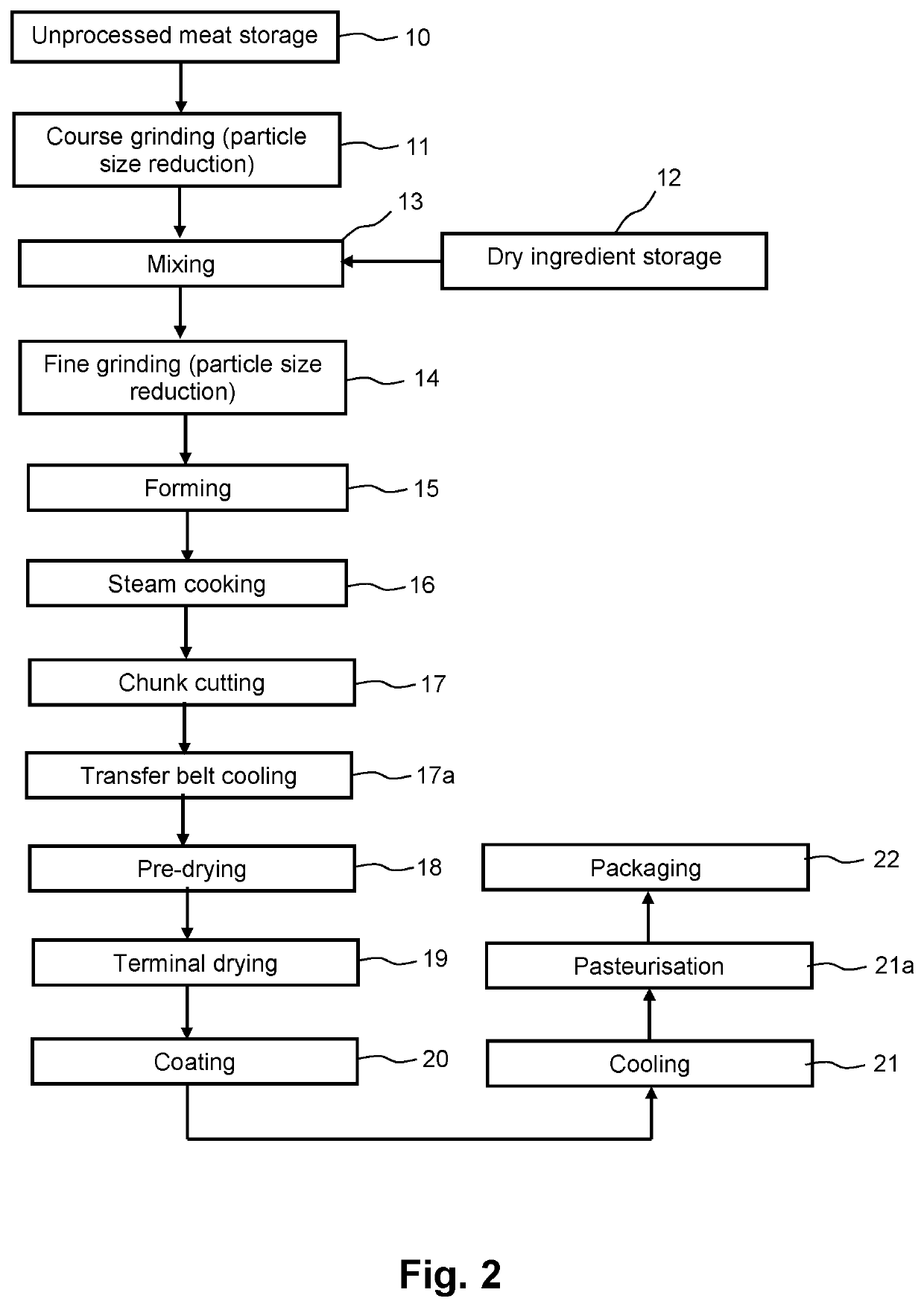Dry pet food manufacturing method
- Summary
- Abstract
- Description
- Claims
- Application Information
AI Technical Summary
Benefits of technology
Problems solved by technology
Method used
Image
Examples
Embodiment Construction
[0037]Embodiments of the invention will now be described by way of non-limiting example only and with reference to the accompanying drawings, in which:
[0038]FIG. 1 shows a flow diagram of a conventional dry food manufacturing process; and
[0039]FIG. 2 shows flow diagram of a dry food manufacturing process according to an embodiment of the invention.
[0040]The flow diagram of FIG. 2 begins with a step 10 of storing unprocessed meat. The unprocessed meat is preferably fresh but could alternatively be frozen, and is in substantially the same constitution as originally taken from the relevant animal. The step 10 is preferably of short duration, dependant on whether the meat is fresh or frozen. For example, there is preferably less than 72 hours between the slaughter of the animal and the retrieval of the fresh meat from the storage for use in a subsequent grinding step 11. The grinding step 11 coarsely grinds the unprocessed meat so that is can be mixed with some dry ingredients in a mixi...
PUM
 Login to View More
Login to View More Abstract
Description
Claims
Application Information
 Login to View More
Login to View More - R&D
- Intellectual Property
- Life Sciences
- Materials
- Tech Scout
- Unparalleled Data Quality
- Higher Quality Content
- 60% Fewer Hallucinations
Browse by: Latest US Patents, China's latest patents, Technical Efficacy Thesaurus, Application Domain, Technology Topic, Popular Technical Reports.
© 2025 PatSnap. All rights reserved.Legal|Privacy policy|Modern Slavery Act Transparency Statement|Sitemap|About US| Contact US: help@patsnap.com


